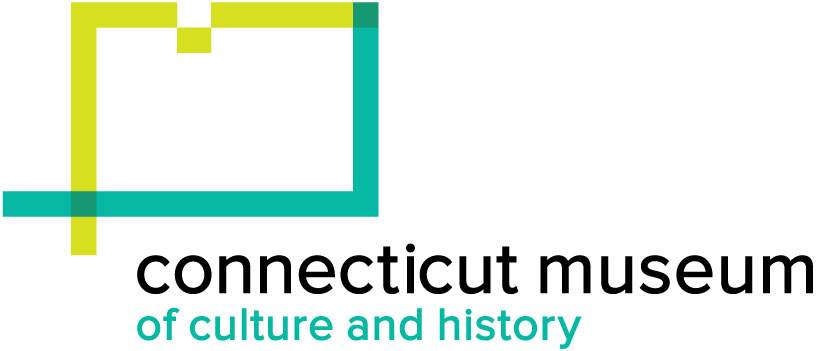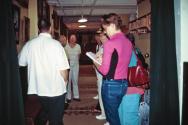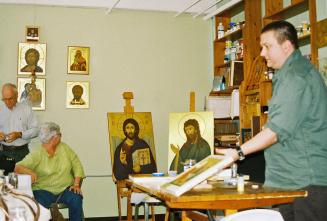CCHAP Bus Tour: Eastern European Sacramental Art, 2004
SubjectPortrait of
Marek Czarnecki
(Polish-American)
Date2004 September 11
MediumBorn Digital Photography
ClassificationsGraphics
Credit LineConnecticut Cultural Heritage Arts Program collections
CopyrightIn Copyright
Object number2015.196.1116.1-.6
DescriptionBorn digital photographs of the CCHAP Bus Tour on Eastern European Sacramental Art on September 11, 2004. Tour participants are visiting Marek Czarnecki’s studio. Iconography and religious statues are visible.
NotesSubject Note: The Connecticut Cultural Heritage Arts Program at the Institute for Community Research collaborated with Manchester Community College (MCC) on a cultural tourism project in 2004-2008. Each year, three or four day-long bus tours visited cultural events and artist studios in ethnic communities living in different parts of the state as a way for new audiences to experience and meet Connecticut’s ethnic and occupational communities. Project goals included 1) expanding awareness of unfamiliar art forms and heritage tourism assets, 2) encouraging access to little-known ethnic or occupational communities, 3) creating audience and artist interactions, 4) stimulating sales and commissions of traditional arts and foods, and 5) developing new partnerships with community organizations and artists. The tours were developed and led by the Connecticut state folk arts program director, Lynne Williamson along with artists from each community. The partnership with MCC ensured that the tours were advertised in the Credit-Free Catalogue each semester. Audiences for the tours were primarily members of the Older Adults Association, a core audience for MCC’s Credit-Free courses. Each day-long bus tour included a visit to folk artists’ studios or shops to observe them producing or selling their work, while engaging with visitors in discussions on the history of their communities and the background of their art form. Tours stopped at related landmarks and/or restaurants in the artists’ neighborhoods, or attended a local community festival. The artists and community groups visited gave insightful presentations on their cultures and artistic traditions. Each tour included a traditional dinner or lunch where visitors could sit down to eat and talk with the artists and community members. CCHAP received an NEA Challenge America Cultural Tourism grant for a pilot series of bus tours in 2004. Subsequent project funders also included the Greater Hartford Arts Council, the National Endowment for the Arts, and the Connecticut Commission on Culture and Tourism.
Eastern European Traditional and Sacramental Art: The September 11, 2004 tour visited the studio of iconographer and community scholar Marek Czarnecki where he demonstrated icon painting and discussed the history and use of this art form. With Czarnecki as guide, the tour stopped in Terryville, Connecticut to view the icon screen at St. Michael’s Ukrainian Catholic Church, and to learn about the Ukrainian pysanky created by Father Paul Luniw. The tour then traveled to St. Stanislaus Church in Bristol to view icons created by Czarnecki and the harvest ornament displayed at the altar. Participants then attended the Dozynki Harvest Festival held on the grounds of St. Stanislaus, experiencing Polish music and a variety of Polish foods, and meeting Polish residents.
Biographical Note: Marek Czarnecki began writing icons in 1990 for his home parish of St. Stanislaus Kostka in Bristol, Connecticut. It was appropriate for this first generation Polish-American that his first icon would be of Our Lady of Czestochowa, the Black Madonna of Poland. Leaving behind a contemporary art education, the icon became his sole interest as an artist. Iconography is a fundamental liturgical art form that provides authentic, meaningful and dignified images which exemplify the larger consciousness of the Christian Church. Icons carry a patrimony of both theology and art, conveying essential dogmatic and biographical information and embodying the presence of the holy ones depicted.
After studying with several iconography teachers, Marek began a life-long apprenticeship with master iconographer Ksenia Pokrovskaya in 1999. He has translated her teachings into an English language technical manual for iconographers, and taught workshops with her at several national sites, including St. Tikhon's Seminary in South Canaan, Pennsylvania. Following established tradition, Marek’s icons are made with natural materials; the foundation is linen glued to a wood panel and primed with a marble-based gesso. Painted with egg tempera mixed with natural earth and mineral pigments, the halos and backgrounds are gilded with 22 karat gold. The icon is then varnished with copal resin.
Marek’s icons can be found in in the homes and chapels of individuals, as well as churches across the country, including the Catholic Cathedral of the Immaculate Conception in Springfield, Illinois, the Franciscan University of Steubenville, St. Thomas More Chapel at Yale University, and Sean Cardinal O'Malley. His icon of "Christ the Eternal High Priest", originally written for a seminary chapel, gained him international attention when it was chosen by the United States Council of Catholic Bishops as the image to represent "The Year of the Priest". This icon was widely distributed; more than a million copies were printed, reproduced, and used in dioceses as distant as London, Stockholm, Singapore, and Sydney. Marek is also a skilled restoration artist, working with statues from churches across the country, and he creates ornaments and installations to mark festivals and holy seasons in his parish church of St. Stanislaus in Bristol Connecticut.
Marek helped edit the book, "Hidden and Triumphant: The Struggle to Save Russian Iconography in Twentieth Century Russia" (Paraclete Press, 2010). He continues to teach and write icons out of his studio in Meriden, Connecticut. He has won a Connecticut Commission on the Arts Painting Fellowship in 1996 and 2004, the 1998 American Council for Polish Culture Award, the 2006 Polish American Historical Association Outstanding Achievement Award, and a Southern New England Traditional Arts Apprenticeship Grant to teach an advanced student. Articles on his work have appeared in the Hartford Courant, St. Anthony Messenger, Catholic Digest, Our Sunday Visitor, and New York Times.
Additional audio, video, and/or photographic materials exist in the archive relating to these artists and these events.
Cataloging Note: This project was made possible in part by the Institute of Museum and Library Services MA-245929-OMS-20.
Status
Not on view2008 April 19
Daniel Boucher
2008 March 8


















